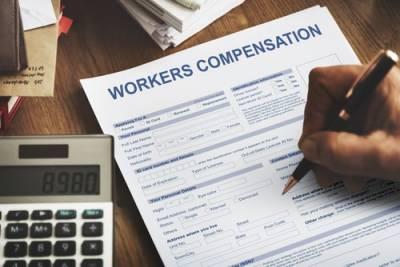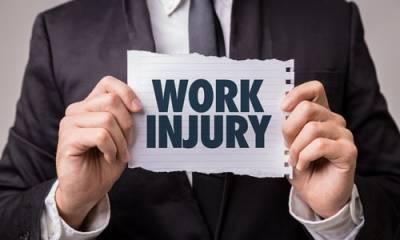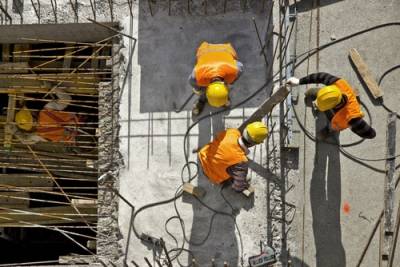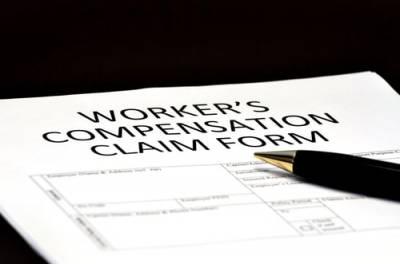Recent Blog Posts
When Are Independent Medical Reviews Used in California Workers’ Comp Cases?
 People who are injured while working will usually be able to receive workers' compensation benefits, which will address issues such as the costs of their medical treatment, the income lost while recovering from an injury, and job displacement. However, the process of obtaining workers’ comp benefits is not always straightforward. In some cases, disagreements may arise between an injured worker and their employer or an insurance provider over the medical treatments a person should receive. In such cases, independent medical reviews (IMRs) may be used by the California Division of Workers’ Compensation (DWC) to help resolve these disagreements.
People who are injured while working will usually be able to receive workers' compensation benefits, which will address issues such as the costs of their medical treatment, the income lost while recovering from an injury, and job displacement. However, the process of obtaining workers’ comp benefits is not always straightforward. In some cases, disagreements may arise between an injured worker and their employer or an insurance provider over the medical treatments a person should receive. In such cases, independent medical reviews (IMRs) may be used by the California Division of Workers’ Compensation (DWC) to help resolve these disagreements.
What Is an Independent Medical Review?
An independent medical review is a process that is used to resolve disagreements between injured workers and workers' compensation insurance companies about the treatments that should be provided and whether certain treatments are medically necessary. In an IMR, a medical professional will review a request for treatment and medical records and documentation about a patient's condition and provide an opinion on whether the requested care is medically necessary.
When Can I Receive Workers’ Compensation for an Occupational Illness?

Working for long hours, performing job duties that involve harmful substances, or working in hazardous environments can lead to various health risks, including occupational illnesses. Fortunately, the California workers' compensation system is designed to help employees who have been injured or become ill from their job. Workers' compensation benefits are available to employees who have suffered a work-related injury or illness. However, many people are not aware of when they are eligible to file for workers’ compensation due to an occupational illness.
Understanding Occupational Illnesses
First, it is important to know what an occupational illness is. An illness or disease that results from exposure to harmful chemicals, toxins, or other substances in the workplace may qualify as an occupational illness. Other illnesses or diseases may arise out of the work a person has performed. If an illness occurred while a person was working or was caused by the conditions in the workplace or work-related activities, it would be considered an occupational disease.
What Are the Most Common Causes of Injuries for Construction Workers?

Working in the construction industry comes with its fair share of hazards. Construction workers are exposed to multiple risks every day, and accidents and injuries are not uncommon. Construction sites are known for their hazardous settings, heavy machinery, and dangerous tools, and these factors can put construction workers at a high risk of injury. Fortunately, injured construction workers will usually qualify for workers' compensation benefits.
Common Construction Site Accidents Leading to Injuries
There are numerous issues that can put construction workers in danger of suffering injuries. Workplace accidents and injuries may occur due to:
-
Falls - The most common types of injuries on construction sites involve falls. Construction workers work at various heights, including on scaffolding, ladders, roofs, and elevated platforms. Falls from heights can occur due to defective equipment or failure to use safety measures such as harnesses or nets. Workers who fall from heights may suffer injuries such as broken bones, spinal cord injuries, head injuries, or other forms of serious bodily harm.
What You Need to Know About Workers' Comp for Leg and Knee Injuries

If you have been injured on the job in California, you may be entitled to workers’ compensation benefits. There are a variety of different types of workplace injuries that are covered under California workers’ compensation laws, including leg and knee injuries. You may be able to receive medical benefits, temporary or permanent disability benefits, and more. The specifics of your claim can vary depending on the severity of your injury and other factors. By understanding how knee and leg injuries are addressed in workers' comp cases, you can ensure that you will be able to receive the benefits you deserve.
Can Office Employees Receive Workers’ Comp for Accidents and Injuries?

Every workplace carries its own inherent risks, and office environments are no exception. Accidents and injuries can happen in any job setting, and they can cause a great deal of difficulty for workers. The question is: if an office employee is injured or becomes ill on the job, are they eligible for workers’ compensation benefits? Fortunately for workers, the answer is "yes." Those who are injured in workplace accidents, contract diseases or illnesses while working in offices, or suffer bodily harm due to the work they have performed will be able to receive benefits. If you are an office worker, understanding the types of benefits that may be available can help you make sure you will be able to recover from an accident or injury while at work.
Types of Injuries in the Office Environment
Many of the most common types of injuries that happen in an office environment are repetitive stress disorders such as carpal tunnel syndrome. These injuries affect the nerves in the wrists, and they may be caused by activities such as typing or using a computer. They can lead to significant pain or loss of sensation in the hands and wrists, affecting a person's ability to continue working as they had previously. Other types of repetitive injuries may include eye strain from looking at computer monitors or small print on documents throughout the day, as well as back pain or other issues related to posture when sitting in office chairs.
What Types of Medical Benefits Will Workers’ Compensation Provide?

An on-the-job injury can be difficult to deal with. These injuries may occur in workplace accidents, or they may be the result of physical strain placed on the body when performing work-related tasks, such as repetitive motions or heavy lifting. In some cases, emergency treatment may be required, while in others, a person may find that they will need surgery to correct damage or ongoing treatment such as physical therapy. Injured workers may be concerned about the costs of this treatment, as well as the financial losses they may experience if an injury limits their ability to work.
Fortunately, workers' compensation benefits can help address these issues. Medical benefits can be especially important, since they will cover the costs of all medical treatment related to a work injury. However, workers may be unsure about exactly what types of treatment will be covered and the procedures they may need to follow. With the help of a workers' compensation attorney, employees who have suffered injuries can make sure they receive all of the treatment necessary to fully address the effects of an injury and return to work.
Could My Workers’ Compensation Claim Be Denied Because of a Positive Drug Test?
 When an employee is injured on the job, workers’ compensation benefits can be a desperately needed source of financial support for serious injuries. But even under the best of circumstances, an employer’s insurance company will work hard to find a reason to deny a workers’ compensation claim.
When an employee is injured on the job, workers’ compensation benefits can be a desperately needed source of financial support for serious injuries. But even under the best of circumstances, an employer’s insurance company will work hard to find a reason to deny a workers’ compensation claim.
One common excuse insurance companies and employers use to deny workers’ compensation claims is that the employee was under the influence of drugs or alcohol and that the intoxication, rather than unsafe working conditions, led to the worker’s injuries. However, the California Labor Code provides that an employee can still qualify for workers’ compensation even if they failed a drug test–but only if they can prove that their drug or alcohol use was not the proximate cause of their injuries.
Who Has the Burden of Proof in Intoxication-Related Workers’ Compensation Denial?
Supplemental Job Displacement Benefits in California
 Under California's workers' compensation system, an injured worker may be entitled to a supplemental job displacement voucher if their injury prevents them from returning to the same or similar employment. This voucher is intended to help workers pay for retraining and education expenses, such as tuition costs, books, and fees. A qualified workers’ compensation lawyer can help you understand what a supplemental job displacement voucher is, when a worker is eligible to receive one, and how much the voucher is worth.
Under California's workers' compensation system, an injured worker may be entitled to a supplemental job displacement voucher if their injury prevents them from returning to the same or similar employment. This voucher is intended to help workers pay for retraining and education expenses, such as tuition costs, books, and fees. A qualified workers’ compensation lawyer can help you understand what a supplemental job displacement voucher is, when a worker is eligible to receive one, and how much the voucher is worth.
What Is a Supplemental Job Displacement Voucher?
Commonly known as a supplemental job displacement voucher, the supplemental job displacement benefit (SJDB) is a payment given by the insurance company that pays for certain educational and vocational training expenses incurred by an injured worker who cannot return to his or her pre-injury job. The SJDB is issued in the form of a voucher that can be used for tuition costs at accredited public or private schools, textbooks and other materials necessary for school attendance, fees associated with testing or certification programs, career counseling services related to obtaining new skills or training for new occupations, and any other educational expense approved by the Division of Workers’ Compensation. The SJDB does not cover living expenses during training or commuting costs associated with attending classes.
Employees Misclassified as Independent Contractors May Be Entitled to Workers’ Compensation for a Work Injury
 Being hurt in a work accident can lead to overwhelming medical expenses and lost income. Workers’ compensation benefits are intended to help injured employees cover these expenses. Unfortunately, not everyone qualifies for workers’ compensation. In California, injured employees are covered by workers’ comp, but independent contractors who suffer a work injury are not entitled to compensation through workers’ compensation insurance.
Being hurt in a work accident can lead to overwhelming medical expenses and lost income. Workers’ compensation benefits are intended to help injured employees cover these expenses. Unfortunately, not everyone qualifies for workers’ compensation. In California, injured employees are covered by workers’ comp, but independent contractors who suffer a work injury are not entitled to compensation through workers’ compensation insurance.
However, workers that are misclassified as independent contractors but are actually employees may be able to get compensation for lost wages and medical bills through workers’ comp. If you were hurt on the job and you suspect you have been misclassified as an independent contractor, read on to learn more about how you might actually qualify for workers’ compensation benefits.
Employee Misclassification in California Work Injury Cases
There are pros and cons to being an employee. Employees of a company are usually entitled to benefits like paid time off and health insurance. However, they must also adhere to certain work hours or other conditions of employment. Independent contractors, on the other hand, are not under the employer’s control to the same extent that employees are. Independent contractors are also ineligible for certain benefits, including workers’ compensation coverage.
What You Need to Know About Retaliation in California Workers’ Compensation Cases
 In the state of California, employers are prohibited from retaliating against employees who file workers' compensation claims. This means that employers cannot punish employees for filing a valid, good-faith claim or attempt to discourage employees from filing in the first place. It is important to understand what constitutes retaliation and what legal remedies are available to those who have been subjected to it. If you have recently filed a workers’ compensation claim and you believe that your employer is retaliating against you, an experienced work comp lawyer can help you explore the possibility of taking legal action.
In the state of California, employers are prohibited from retaliating against employees who file workers' compensation claims. This means that employers cannot punish employees for filing a valid, good-faith claim or attempt to discourage employees from filing in the first place. It is important to understand what constitutes retaliation and what legal remedies are available to those who have been subjected to it. If you have recently filed a workers’ compensation claim and you believe that your employer is retaliating against you, an experienced work comp lawyer can help you explore the possibility of taking legal action.
What Is Retaliation?
Retaliation occurs when an employer takes adverse action against an employee because the employee has exercised their legal right to file a workers' compensation claim. Adverse actions can range from verbal abuse or threats to physical harm or termination of employment. This type of behavior by employers is illegal and may be subject to criminal and civil penalties, as they can have a significant impact on an employee's ability to earn a living wage and support themselves and their family.. Employers should not retaliate against employees who have filed a workers' compensation claim as it can be considered a form of discrimination.








